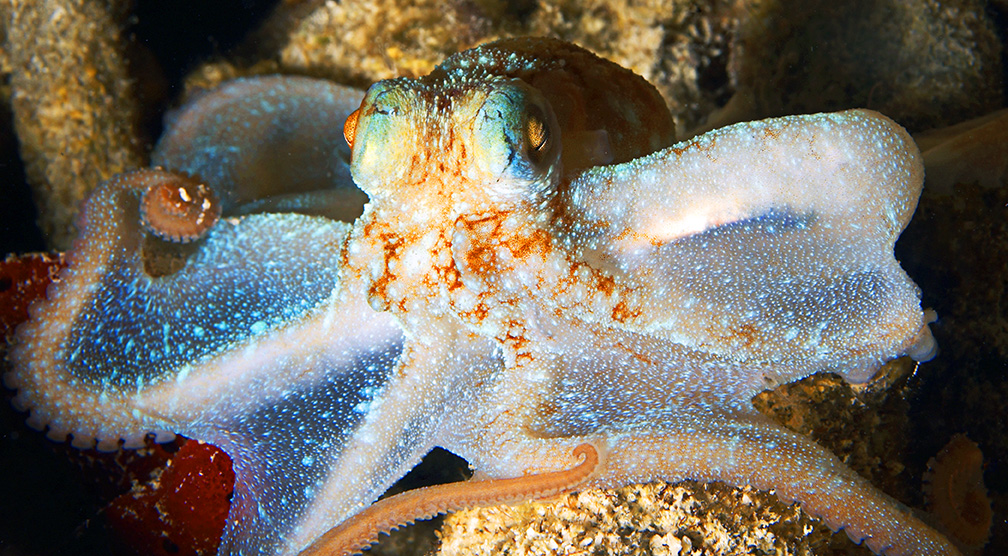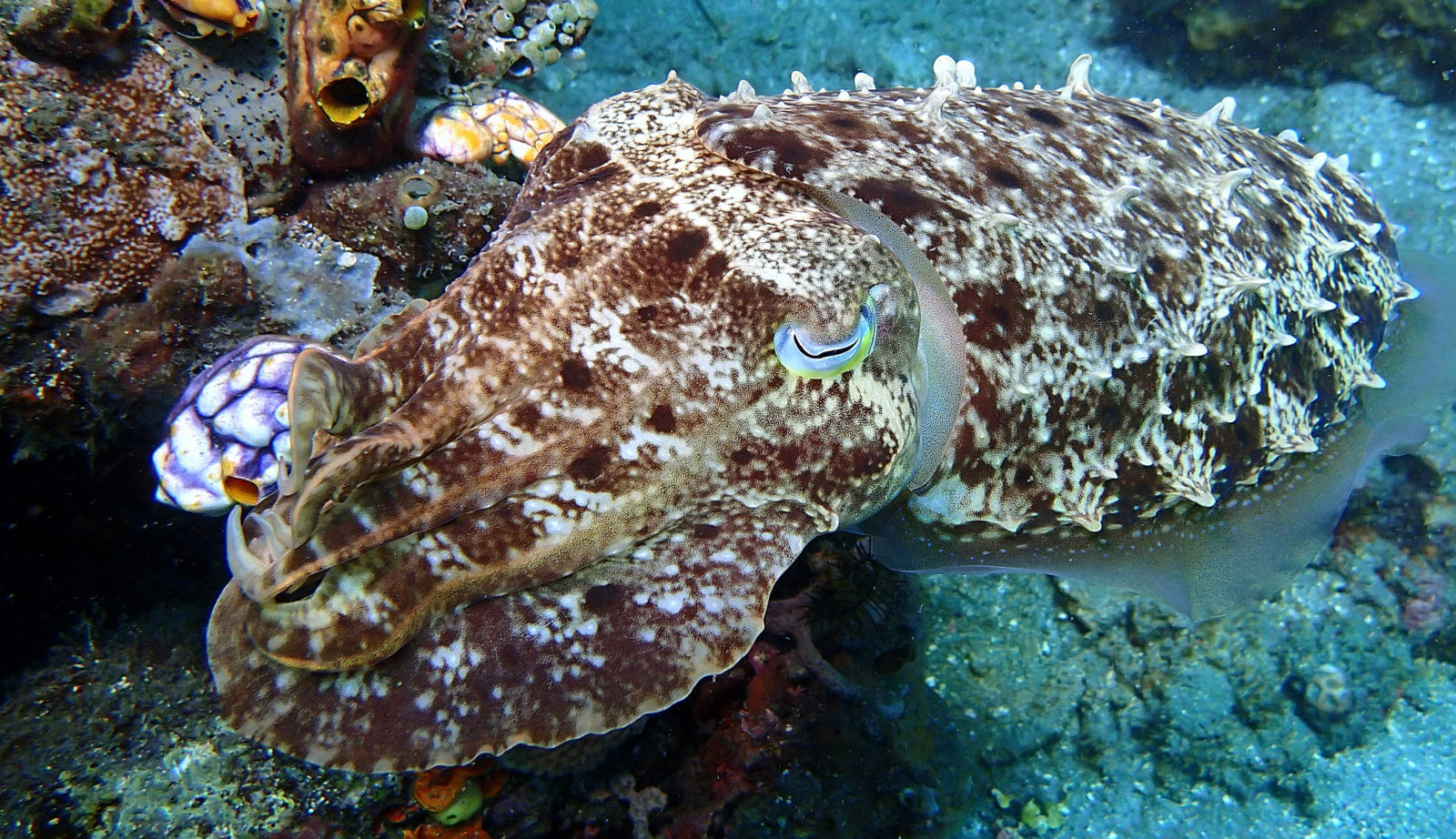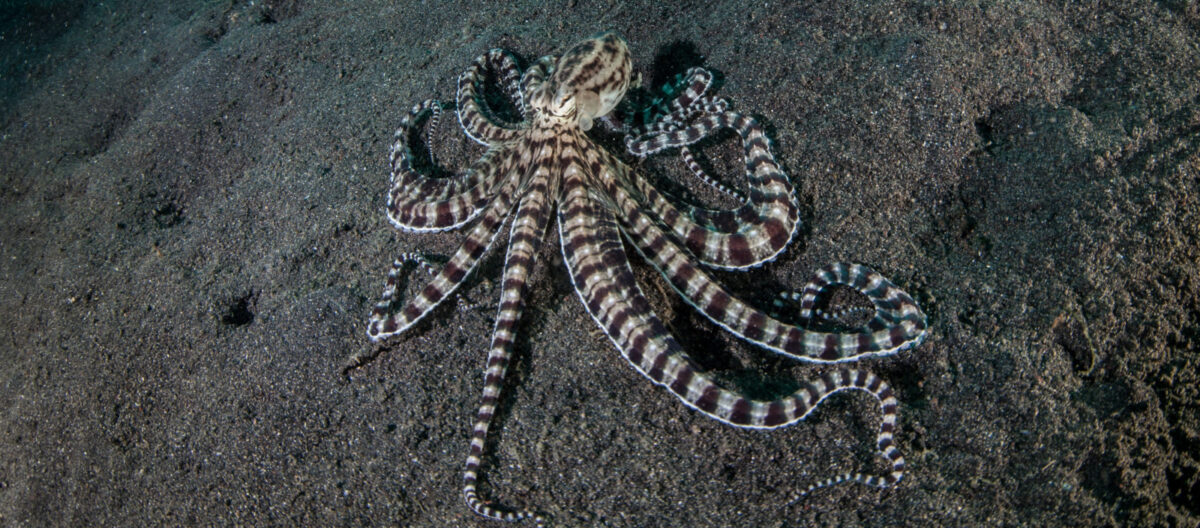Do Octopuses Dream of Eight Legged Sheep?
A dive into Heidi the octopus’ spellbinding sleeping patterns

You may have seen this video which has been making its way around the internet since it was introduced last fall. In it, Heidi the octopus is sleeping. While she snoozes, she begins to change her color rapidly while David Scheel, a marine biologist at Alaska Pacific University, narrates. He constructs a fictional narrative of what Heidi may be dreaming about. He weaves a story of a slumberland where she picks up a tasty meal and her skin changes in rhythm with the story playing out in her head.
While this is a lovely idea, science doesn’t actually have the answer as to why Heidi is changing color. The video raises the question: Can octopuses dream and what may they dream about?
Let’s kick off this exploration by defining what it means to dream. Dreams mainly occur during the rapid eye movement stage of sleep, commonly known as REM. During that time our brain functions similarly to when we are awake. Our neurons fire with a similar intensity although we are paralyzed and asleep. This phase gets its name from the fact that our eyes move during this phase in looping patterns. We generally measure REM phases through electrical activity in the brain measured by an EEG (electroencephalography).
Through measuring EEG and other sleep behaviors, we have found that the REM stage of sleep occurs in some mammals and birds. Pet owners have probably observed their cat or dog twitching, moving their paws or making noise in their sleep while going through their own REM cycle. It was thought that REM sleep only existed in warm blooded animals until research on Australian bearded dragons revealed that they similar brain patterns to REM sleep. This revelation meant that REM sleep seems to have evolved earlier than we previous thought which widens the range of animals who may dream.

Just this past year, scientists observed resting cuttlefish move their eyes and twitch their bodies similarly to animals in REM sleep. Interestingly, they cycled through color changes in loops just like our eyes move in patterns during dreaming. The study suggests that cephalopods go through a sleep-like state similar to REM though it may exhibit differently in our invertebrate cousins.
Experiencing REM sleep does not necessarily mean these animals are dreaming. We have little evidence to support that cephalopods experience sensory imagery like we do when we dream. We can measure whether or not they go into a REM cycle but can’t communicate with them to know what they experience while they sleep. Which brings us back to Heidi. While it is tempting to want to anthropomorphize her behavior, we simply don’t know what she experiences while she snoozes.
Whatever the cause, it is amazing to watch Heidi sleep. Octopuses often hide while they sleep so it is rare to be able to watch them while they slumber. Watching her change patterns is mesmerizing on its own even if we’re still in the dark about why it is happening. It’s just one more ocean mystery science has yet to unravel.
